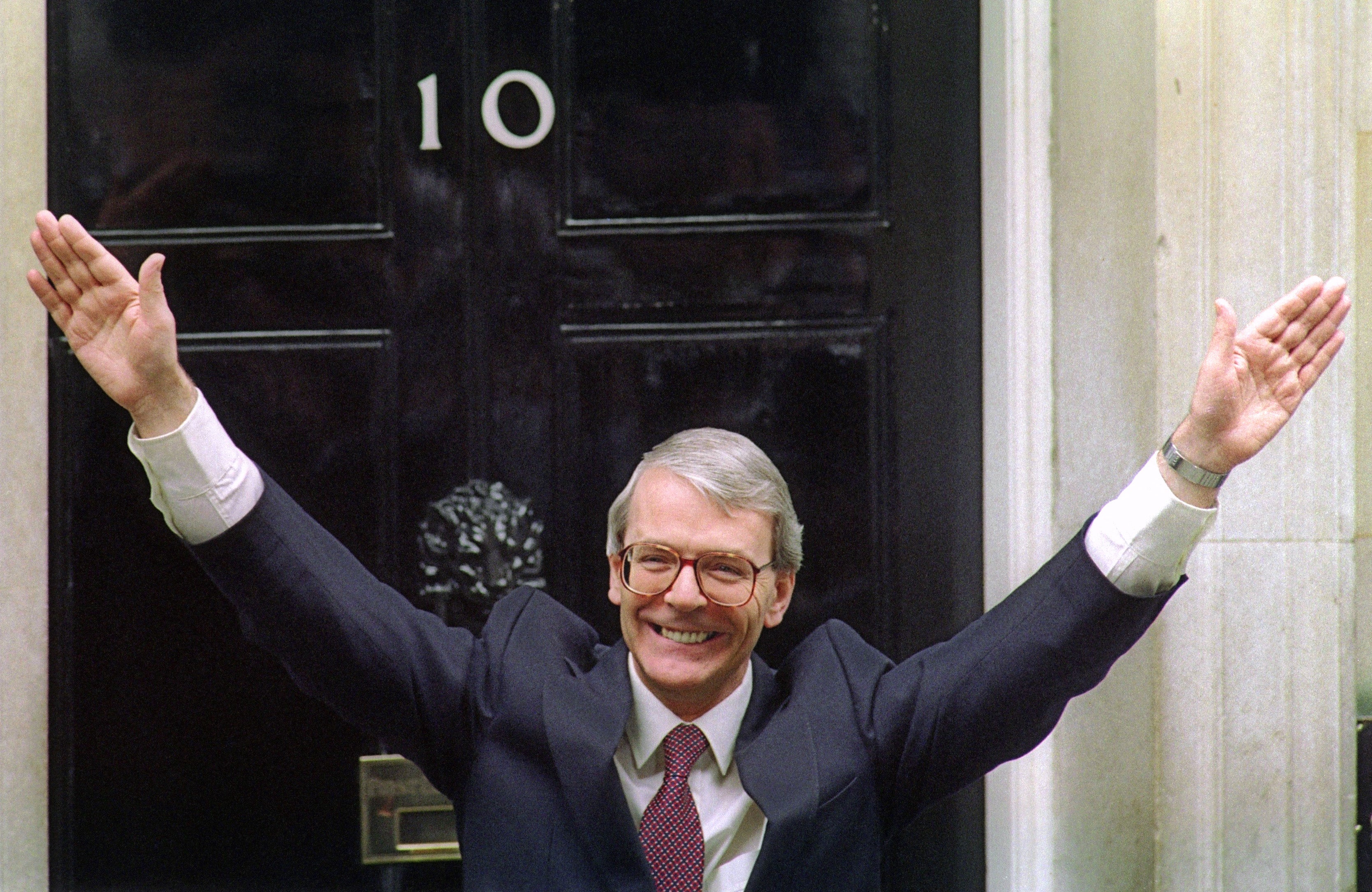Think Sunak can magic a Major-style win? Dream on...
After 13 years of Tory rule, John Major defied the opinion polls to win a shock election victory. Surely Sunak has a chance do a 1992? No, says Andrew Grice, he’s hurtling towards 1997...


During another week of damaging plotting and infighting, the Conservatives tried to keep their spirits up by recalling 1992. After 13 years of Tory rule, John Major defied the opinion polls to win a surprise election victory.
Rishi Sunak’s “better the devil you know” campaign, built on the economy, will copy Major’s – the country has turned a corner after hard times, so voters shouldn’t risk Labour turning the clock back. Pre-election tax cuts were announced then and will come in this year’s Budget in March. Labour is again led by a leader who, according to the Tories, has changed his mind so many times he can’t be trusted. As one minister told me: “It worked in 1992. It can work again this year.”
Unfortunately for Sunak, there are many differences with now and 32 years ago. In 1992, the public judged they had already had the change they wanted in 1990, when Major replaced Margaret Thatcher and ditched her hated poll tax. Sunak has tried to be the change candidate – but flopped.
The only way he could pull it off would be by disowning Boris Johnson and Liz Truss. In my view, he should do it, but he fears it would provoke another bloody battle in the Tories’ civil war. Although this week’s one-man attempted coup by Truss fan Simon Clarke fizzled out, Sunak’s right-wing critics have not given up the hope of ousting him before the next general election. They plan further skirmishes if the Tories lose by-elections in Wellingborough and Kingswood next month and suffer a heavy defeat in the May local authority elections.
While the economy is Sunak’s best bet, the issue is unlikely to help him as much as it aided Major. Mortgage payments are still rising, and it takes time for improving statistics like falling inflation to convince people things can only get better. In 1992, they thought things would get worse under Labour. The Tories were ahead on economic trust (by 42 per cent to Labour’s 29 per cent); today, Labour is ahead by 39 per cent to 28 per cent.
Major, the boy from Brixton, transformed his grey image by getting on his soapbox and addressing small groups of voters; Sunak is less convincing when he does this.
In 1992, the public gave Major the benefit of the doubt. The Tories forfeited this under Johnson and Truss. Major led Labour’s Neil Kinnock on leader likeability by 52 per cent to 36 per cent, while Starmer leads Sunak by 38 per cent to 26 per cent.
Both Kinnock and Starmer are on the soft left and have reformed Labour and its policies to end a period of hard left control. But despite Kinnock’s Herculean efforts, Labour remained unelectable and he was not seen as a prime-minister-in-waiting. Labour tried to exude confidence by portraying itself as a government-in-waiting, but it sometimes looked like cockiness – one reason why Starmer is so tough on complacency and the causes of complacency.
Indeed, Labour minds are also on 1992. Morgan McSweeney, its election campaign chief, reminds the shadow cabinet about elections where a party ahead in the polls blew it – including 1992.
The most important lesson Starmer has learnt is on the economy. In 1992, Labour’s “shadow budget”, proposing tax rises for the better off to pay for increases in child benefit and the state pension, was converted by the Tories into a crude but lethal “tax bombshell”. This year’s Labour manifesto will not include detailed tax and spending plans beyond the limited pledges already announced, funded by imposing VAT on private schools and ending non-domicile tax status.
I’m told Starmer will soon go further by dropping Labour’s flagship pledge to spend £28bn a year on green investment. The party will still promise to “borrow to invest”, but the £28bn figure will disappear in an attempt to stop the Tories warning voters of another tax bombshell. “We can’t fight an election on borrowing any more than we can on tax,” said one Starmer ally. “We can fight on investment but the £28bn obliterates any other dimension to the argument.”
However, a battle is still raging on this behind the scenes. Ed Miliband, the shadow energy security and net zero secretary, is fighting a rearguard action. He has persuaded Angela Rayner, the deputy leader, and Sue Gray, Starmer’s chief of staff, that “Labour has to stand for something big” and that Starmer will look weak if he surrenders to Tory “bullying”. Despite that, I expect the £28bn figure to be ditched.
For Sunak, the only crumb of comfort is that it doesn’t yet feel like we are heading for a repeat of 1997 and the Labour landslide suggested by today’s polls. Starmer is not as popular as Tony Blair was before his triumph. The bad news for Sunak is that, despite all their talk about 1992, an increasing number of Tories privately fear this year’s result will be more like 1997.
Join our commenting forum
Join thought-provoking conversations, follow other Independent readers and see their replies
Comments
Bookmark popover
Removed from bookmarks